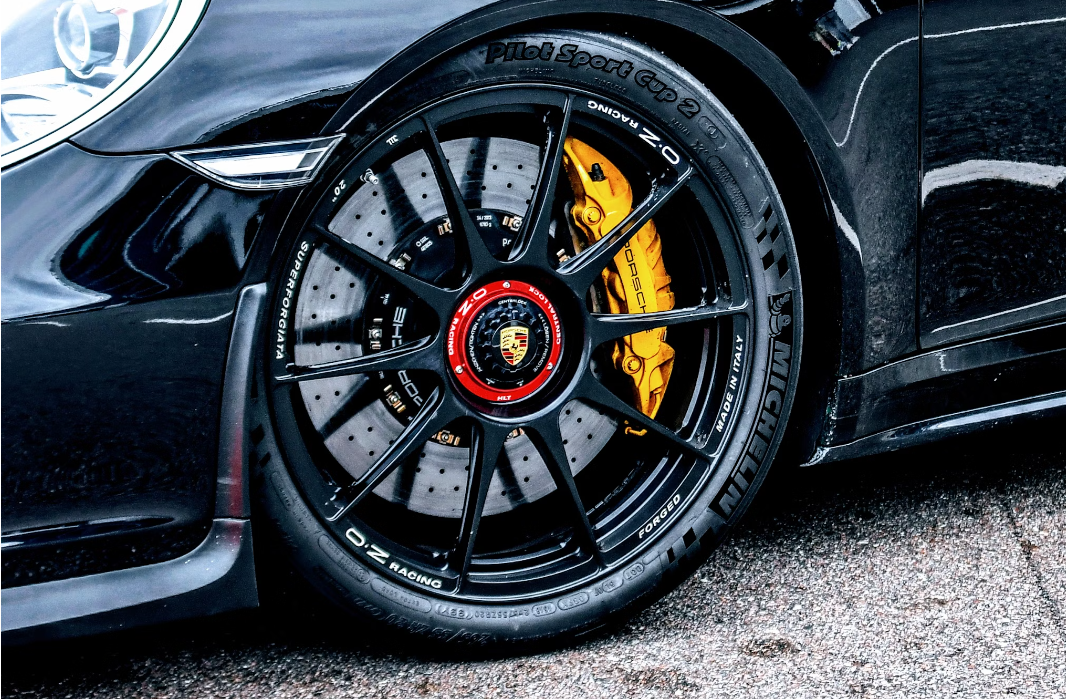The Ultimate Guide to Ceramic Coating Wheels & Calipers
Imagine this: Your car's wheels and calipers, shining like a knight's armor under the blazing sun, impervious to the slings and arrows of outrageous fortune—or, you know, just the regular road grime and brake dust. Sounds like a fantasy, right? Well, not anymore. Welcome to the world of ceramic coating for wheels and calipers.
Why Even Bother with Ceramic Coating?
Before we dive headfirst into the nitty-gritty, let's address the elephant in the room. Why go through the hassle of ceramic coating your wheels and calipers? Isn't that just for the body of the car?
The Unseen Villains: Brake Dust and Road Grime
First off, let's talk enemies. Brake dust, that nefarious byproduct of simply using your car, loves to cling to your wheels and calipers. Then there's road grime, the Joker to your Batman, always there to dirty up your day. Both of these can corrode and damage the aesthetics and integrity of your wheels and calipers over time.
Heat Resistance is Your Friend
Next up, the heat factor. Your wheels and calipers are constantly exposed to high temperatures, thanks to the friction from braking. This isn't just a summer fling; it's a year-round relationship. Ceramic coatings can withstand these high temperatures, protecting your wheels and calipers from the heat-induced fade and wear.
Aesthetic Perks
Last but not least, let's not forget about the looks. A ceramic coating can give your wheels and calipers a glossy, eye-catching finish that lasts way longer than traditional waxes or sealants. Plus, cleaning becomes a breeze, as dirt and grime will have a harder time sticking to the surface.
Choosing the Right Ceramic Coating
Not all ceramic coatings are created equal, especially when it comes to your wheels and calipers. Here's how to pick the right one.
Temperature Tolerance
Remember the bit about high temperatures? Make sure the ceramic coating you choose is specifically designed to handle the heat. Some products are formulated for body paint and might not stand up to the temperatures your wheels and calipers face.
Application Process
Some ceramic coatings are DIY-friendly, while others are best left to the professionals. Consider your skill level and the complexity of the application process before making a choice. A botched job can do more harm than good.
Longevity and Maintenance
How long do you want the coating to last, and how much maintenance are you willing to put in? Some coatings require regular top-ups or specific cleaning products, while others are more of a 'set it and forget it' deal.
Prepping Your Wheels and Calipers
Preparation is key to ensuring your ceramic coating adheres properly and lasts as long as possible. Here's how to get your wheels and calipers ready for their spa day.
Cleaning 101
Start with a thorough cleaning. Brake dust and road grime are tenacious, so you might need a dedicated wheel cleaner and some elbow grease to get everything off. Make sure to dry thoroughly afterward.
Decontamination
Even after cleaning, there might be contaminants stuck to the surface. A clay bar can help remove these, ensuring a smooth base for the ceramic coating to adhere to.
Polishing for Perfection
If your wheels and calipers are looking a little worse for wear, a polish can help restore their shine and remove any minor imperfections. This step is optional but recommended for the best results.
Applying the Ceramic Coating
With your wheels and calipers clean and prepped, it's time to apply the ceramic coating. Here's how to do it right.

Follow the Instructions
This might seem obvious, but each ceramic coating product can have slightly different application instructions. Read them carefully to avoid any mishaps.
The Right Environment
Temperature and humidity can affect the curing process of a ceramic coating. Make sure to apply the coating in a suitable environment, as recommended by the product instructions.
Patience is a Virtue
Ceramic coatings need time to cure fully. Don't rush this process. Avoid driving your car or exposing the wheels and calipers to water or dirt until the coating has cured completely.
Maintaining Your Ceramic-Coated Wheels and Calipers
So, you've got your wheels and calipers coated and looking sharp. Here's how to keep them that way.
Regular Cleaning
Even with a ceramic coating, regular cleaning is essential. Use a pH-neutral wheel cleaner and avoid abrasive tools or harsh chemicals.
Inspection and Touch-Ups
Periodically inspect your wheels and calipers for any signs of wear or damage to the coating. Some products allow for easy touch-ups if necessary.
Enjoy the Ride
With your wheels and calipers protected and looking their best, all that's left is to enjoy the ride. Whether you're cruising down the highway or showing off at a car meet, you can rest easy knowing your car is protected.
There you have it, folks—the ultimate guide to ceramic coating your wheels and calipers. It might seem like a lot of work, but the results speak for themselves. Not only will your car look better, but it'll also be better protected against the elements and the rigors of the road. So, what are you waiting for? Give your wheels and calipers the treatment they deserve.
Now that you're equipped with the knowledge to keep your wheels and calipers in top-notch condition, why not take the next step? Visit AvalonKing and explore our premium selection of car care products. From our renowned ceramic coatings to our effective car shampoos, we have everything you need to maintain your vehicle's stunning appearance. Don't just dream about a pristine ride—make it a reality with AvalonKing, where quality meets convenience. Check out our products today and join the ranks of car enthusiasts who choose the very best for their vehicles.










